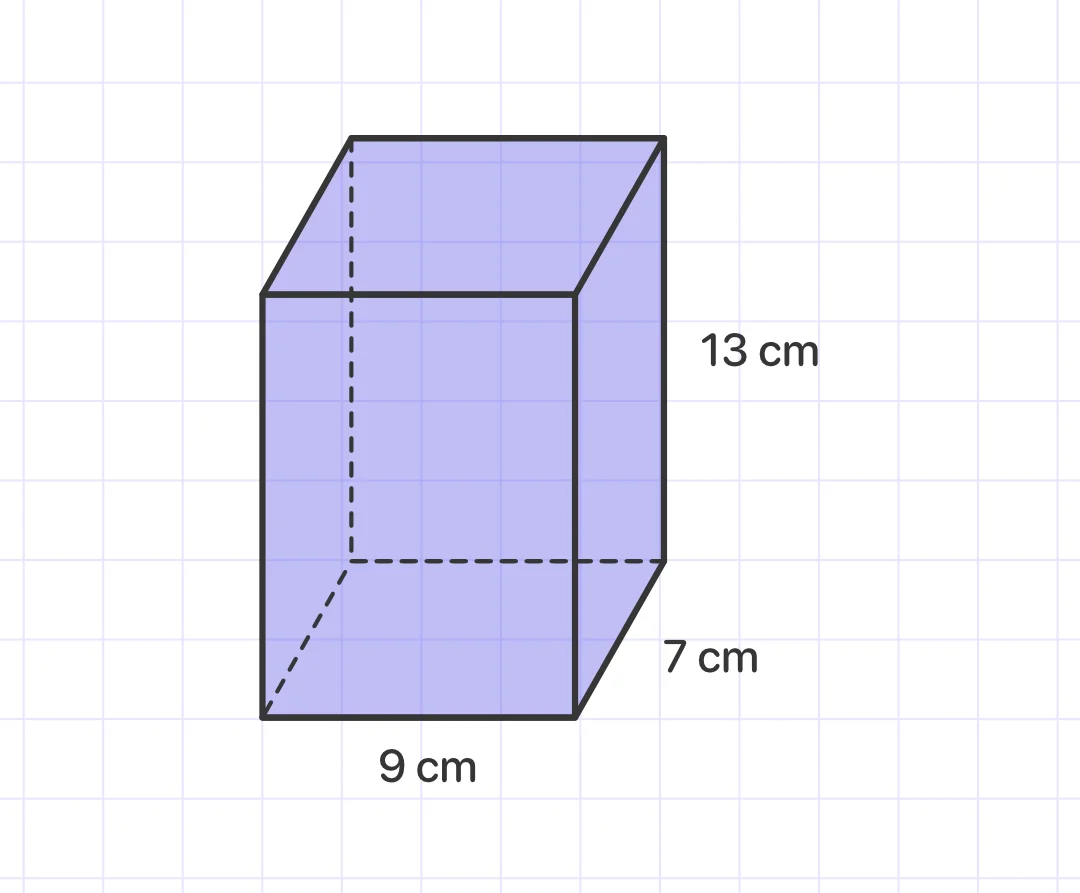MathMaster Blog
A prism is a solid three-dimensional shape with two identical faces and other faces that resemble a parallelogram. The unit of volume of a prism is given as cubic meters, cubic centimeters, cubic inches, or cubic feet, etc.
The volume of a prism is calculated by multiplying the area of the base by the prism's height.
V = Bh
Example 1:
The width of a rectangular prism is doubled, its length is tripled, and its height is cut in half. If the volume of the original prism was V, what is its new volume?
Solution:
The volume of the original prism was
V = l x ω x h
The volume of the new prism is
V = 2l x 3ω x (1/2)h = 3l x ω x h = 3V
Answer: The prism volume is 3V.
Example 2:
Find the volume of a prism below:

Solution:
The volume of a prism is calculated using the formula V = Bh, where B is the base area and h is the height.
The prism's base is a rectangle. The rectangle's length is 9 cm and its width is 7 cm.
A = lw is the area of a rectangle with length l and width w.
So, the base area is 9 x 7 or 63 cm^2.
As the height of the prism is 13 cm, we need to substitute 63 for B and 13 for h in V = Bh.
V = (63)(13)
Now, we need to multiply: V = 819
Answer: The volume of a prism is 819 cubic centimeters.
Example 3:
Calculate the prism's height if its volume is 729 cubic units and its base area is 27 square units.
Solution:
Let the height of the prism be "H".
To calculate it, we need to substitute the values in the volume of the prism formula:

Answer: The height of the prism is 27 units.